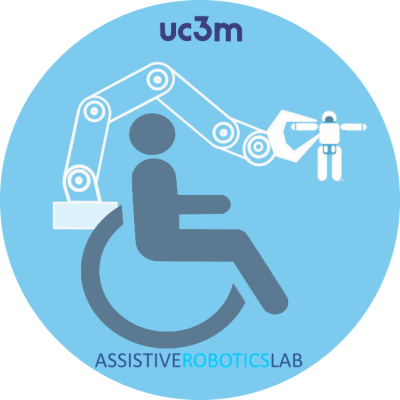The efficient and effective rehabilitation of people with neurological diseases, among them spasticity, represents one of the main social and economic problems for social security systems [1], [2]. Spasticity (from Greek spasmos, meaning ‘drawing or pulling’) is a muscle control disorder characterised by an increase in muscle tone with exaggerated stretch reflexes that also characterizes upper motor neuron syndrome. Furthermore, spasticity is present in other pathologies, such as cerebral palsy, spina bifida, brain stroke and amyotrophic lateral sclerosis.
Robotics can play a significant role in the rehabilitation of patients with spasticity by improving their quality of life and reducing the costs associated with care. While the rehabilitation of lower limbs is a popular research area (particularly exoskeletons for locomotion), the rehabilitation of upper limbs remains to be further explored. In this light, the project aims to develop a platform for modelling, evaluation and rehabilitation of spasticity though robot-assisted therapy.
We propose to develop a method for non-invasive modelling of upper limbs based on the biomechanical modelling of joints using 7GDL Rosen Kinematics [3]. Traditionally, the muscle model is usually based on a non-linear state of Hill’s force-velocity relation [4]. However, the latest model is not suitable for people with spasticity. Therefore, improving the muscle model by introducing new parameters such as rigidity, viscoelasticity, extensibility and thixotropy is key. All of these elements will help develop a new model for spasticity to be validated through simulation.
Our second objective focuses on adapting the model to each patient through a new platform based on robot-assisted therapy and a 3D motion tracking system. The latter will enable a detailed analysis of passive movement response: force/pair and position/velocity of the limb and help determine the degree of spasticity of patients in a fast and objective manner, while simultaneously developing new clinical scales (a modified version of Ashworth [5]). The final adjustments of the model will be done by means of identification techniques like Hammerstein-wiener [6] and new concepts such as the patient’s acceptance.
Ultimately, this project pursues the clinical rehabilitation of patients that validates the system. Trials will be planned for each patient with user-friendly HMI and using a personalised model. The robot will guide the movements of each patient, generating 3D trajectories required automatically, and using continuous goal-directed actions algorithms [7], which will enable self-directed learning during execution [8]. This will allow to accurately assess the rehabilitation measuring new parameters: maximum level of hypertonia/rigidity, area under the curve, hypertonia relation, etc

